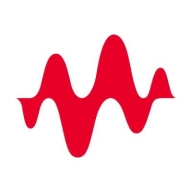

Ixia BreakingPoint and SonarQube Cloud compete in network testing and code quality assurance. Ixia BreakingPoint is strong in network infrastructure testing, while SonarQube Cloud excels in code analysis and quality improvement. Ixia BreakingPoint offers extensive feature sets and integration capabilities, but SonarQube Cloud's flexible pricing provides long-term investment advantages.
Features: Ixia BreakingPoint provides comprehensive testing of network performance, security, and resilience. Unique features include the ability to simulate various network conditions, robust DDoS testing modules, and a Layer 7 traffic generation tool that includes applications like Facebook and Netflix. SonarQube Cloud offers features like deep code analysis, detection of security vulnerabilities and weak points, and effective integration with CI/CD pipelines.
Room for Improvement: Ixia BreakingPoint could improve its complex setup process and reduce dependency on hardware, and enhance ease of use for smaller teams. Additionally, the pricing model may benefit from increased flexibility to cater to different business sizes. SonarQube Cloud may improve by reducing false positives, enhancing documentation for easier CI/CD integration, and speeding up the integration with tools like Android Lint.
Ease of Deployment and Customer Service: Ixia BreakingPoint requires a more complex deployment process due to its hardware requirements. SonarQube Cloud has a straightforward deployment process thanks to its cloud-based structure, reducing setup time and offering seamless CI/CD integration. Both products aim for strong customer service, although SonarQube Cloud's cloud updates make its deployment more agile.
Pricing and ROI: Ixia BreakingPoint involves a significant initial investment, offering high ROI for extensive network testing needs. Its pricing might not suit all budgets. SonarQube Cloud provides more flexible subscription pricing, making it cost-effective, especially for smaller teams, with a favorable ROI through ongoing code quality improvements. Its strategic price structure and cloud-based benefits present notable value for teams focusing on code environments.
| Product | Market Share (%) |
|---|---|
| SonarQube Cloud (formerly SonarCloud) | 4.2% |
| Ixia BreakingPoint | 0.4% |
| Other | 95.4% |


| Company Size | Count |
|---|---|
| Small Business | 7 |
| Large Enterprise | 3 |
| Company Size | Count |
|---|---|
| Small Business | 8 |
| Midsize Enterprise | 3 |
| Large Enterprise | 4 |
By simulating real-world legitimate traffic, distributed denial of service (DDoS), exploits, malware, and fuzzing, BreakingPoint validates an organization’s security infrastructure, reduces the risk of network degradation by almost 80%, and increases attack readiness by nearly 70%.
SonarQube Cloud offers static code analysis and application security testing, seamlessly integrating into CI/CD pipelines. It's a vital tool for identifying vulnerabilities and ensuring code quality before deployment.
SonarQube Cloud is widely used for its ability to integrate with tools like GitHub, Jenkins, and Bitbucket, providing critical feedback at the pull request level. It's designed to help organizations maintain clean code by acting as a quality gate. This service supports development methodologies including sprints and Kanban for ongoing vulnerability management. While appreciated for its dashboard and integration capabilities, some users find initial setup challenging and note the need for enhanced documentation. The recent addition of mono reports and microservices support offers deeper insights into security and code quality, though container testing limitations and false positives are noted drawbacks. Manual intervention is sometimes required to address detailed reporting, with external tools being necessary for comprehensive analysis. Notifications for larger teams during serious issues and streamlined integration of new features are also areas of improvement.
What are the key features of SonarQube Cloud?In specific industries, SonarQube Cloud finds application in finance and healthcare where code integrity and security are paramount. It allows teams to identify critical vulnerabilities early and ensures that software development aligns with industry regulations and standards. By continuously analyzing code, it aids organizations in deploying secure and reliable applications, fostering trust and compliance.
We monitor all Static Application Security Testing (SAST) reviews to prevent fraudulent reviews and keep review quality high. We do not post reviews by company employees or direct competitors. We validate each review for authenticity via cross-reference with LinkedIn, and personal follow-up with the reviewer when necessary.